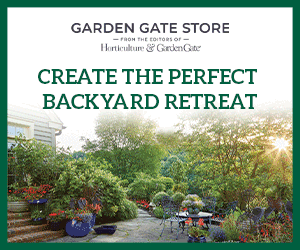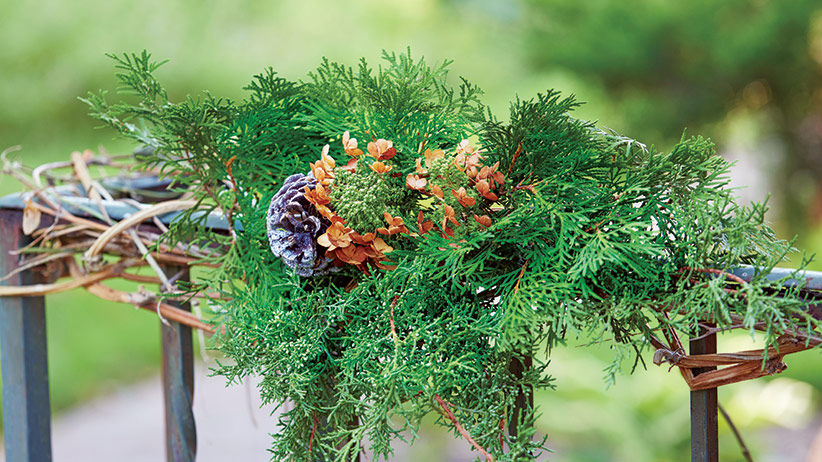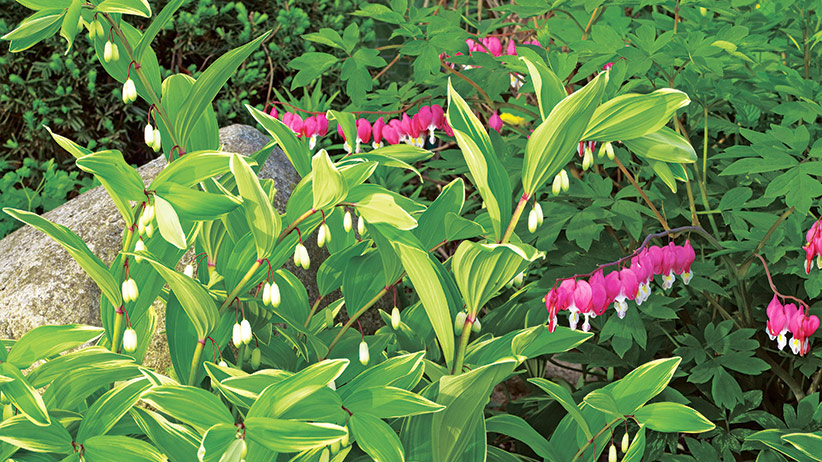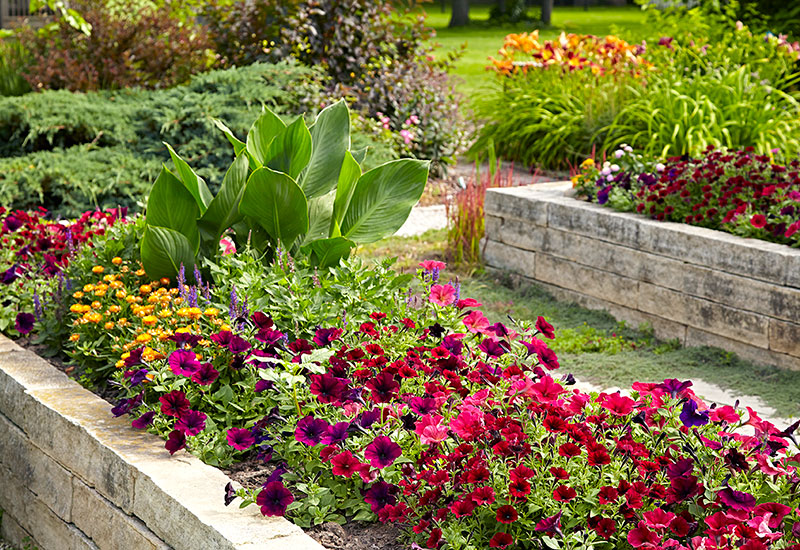
Why build a raised garden bed?
A raised garden bed can make growing many of your favorite flowers and vegetables easier. Whether you struggle with soil that seems unhospitable to your favorite plants or the thought of bending over while weeding and harvesting makes your back hurt, growing plants above ground level makes sense.
Get better soil
One compelling reason to use a raised bed is to control your soil. Heavy clay that doesn’t drain well leads to root rot and other diseases. Sandy soil dries quickly and doesn’t hold nutrients, leaving plants hungry. Raised beds offer the opportunity to fill the frame with rich, weed-free soil that has great drainage. You give your plants the perfect environment for lush, healthy growth. This is your best solution for truly terrible soil because you don’t have to worry about what’s underneath. And you can get immediate results! There’s no tilling or waiting for improvements over several years. Just bring in brand new soil and you’re ready to go.
Less bending over
A raised garden bed is good for your body, too. It can end your need to lean down to plant, weed, deadhead and harvest. This is especially helpful if you have knee or back problems.
Less compaction
When you don't have to step into the garden to take care of it, it reduces compaction. This makes it easier for plants to develop healthy root systems.
Extend your harvest
Putting in a raised garden bed also means extending your harvest. Taller beds thaw earlier in spring, giving you an extra couple of weeks for frost-tolerant favorites like salad greens.
Help deter pests
Well-designed raised beds also thwart pests. A waist-high bed is too tall for most rabbits to reach. Some gardeners report that deer don’t venture between closely spaced beds. And you can line the beds with wire mesh to deter gophers and other burrowing pests.
Add style
Finally, a raised garden bed can be a decorative element in the garden, whether you build up bed edges with stone, pavers or wood. Let’s take a look at the pros and cons.
Pros of a raised garden bed
- It’s easy! Yes, there’s some hauling and spreading, but you don’t need to till.
- Good drainage Beds raised above the original surface can have better drainage.
- Raised beds warm up earlier in spring than surrounding soil Especially if they’re surrounded by stone or concrete edging. This means Northern gardeners can get veggies and annuals going earlier in the season.
Cons of a raised garden bed
- It may need a little time Although you end up with an immediate bed, you need to wait for the soil to settle before you plant trees, shrubs or perennials. One solution is to plant only annuals the first year so if anything settles it’s no big deal.
- May not be for trees and shrubs It’s hard to create a raised garden bed big enough to support trees or large shrubs — it’s not impossible, but it takes a lot of soil!
You Might Also Like:
Vegetable Garden with Curb Appeal
Growing Veggies in Galvanized Raised Garden Beds
7 Easy Plants to Start From Seed
Ergonomic & Adaptive Tools for Gardeners
Choosing the size of your raised garden bed
When building a raised bed or two, your first decision is size. If you get a raised garden bed kit from your local hardware store or garden center, you don’t have to fret. But building a raised bed from scratch gives you freedom to design it in a way that’s right for you. Keep a raised bed around 4 ft. wide. This allows you to weed, water or harvest without stepping into the bed.
Consider the height
Coming up with the right height is more subjective. You can sit on the edges of a raised bed that’s a couple of feet tall and easily reach in without having to bend down. But it’s more costly, requiring more soil to fill and more materials to build it.
Lower raised beds are less expensive to get started, and easier to move if you change your mind. Most perennials, annuals and vegetables do just fine in 12 to 18 in. of soil. Don’t forget to allow for settling — pile the soil at least 4 to 6 in. higher than you think it needs to be.
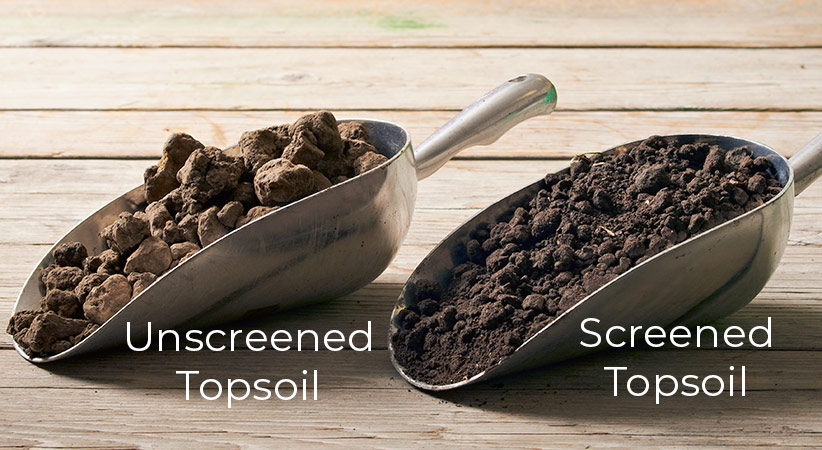
What type of soil to use in your raised garden bed
A well-drained, weed-free topsoil is one of the most common choices. You can usually buy it in bags from your local garden center or home improvement store. But buying in bulk from a local landscaping company and having it delivered may be more cost-efficient. Wherever you get it, use only screened topsoil. Unscreened soil has large chunks that’ll make digging very difficult.
The best option is to go with topsoil or garden soil mixed liberally with compost. This is a less expensive option if you have easy access to organic matter, such as well-aged manure from a local farm.
Though it’s not as cost-effective, many people find that filling their raised beds with a mixture of topsoil and potting mix is an easy way to go since potting mix is usually lighter than bags of topsoil.
You Might Also Like:
6 Organic Soil Amendments and Fertilizers
DIY Cold Frames
How to Start a Vegetable Garden
Calculate How Many Vegetables to Plant
What materials should you use to build a raised garden bed?
After you have your bed dimensions, you have to decide what to make it out of. Below are several great options for materials you can use to build your raised garden bed to suit your style and needs.
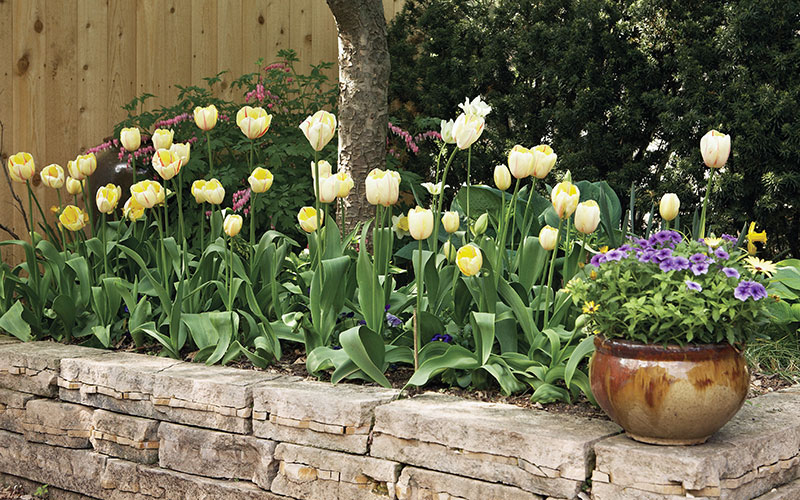
Stone
Stone is a permanent option, and gives your raised beds a structural character. This can be a fantastic design option to incorporate into your yard if you have a flagstone path or patio. See more about stone raised beds here.
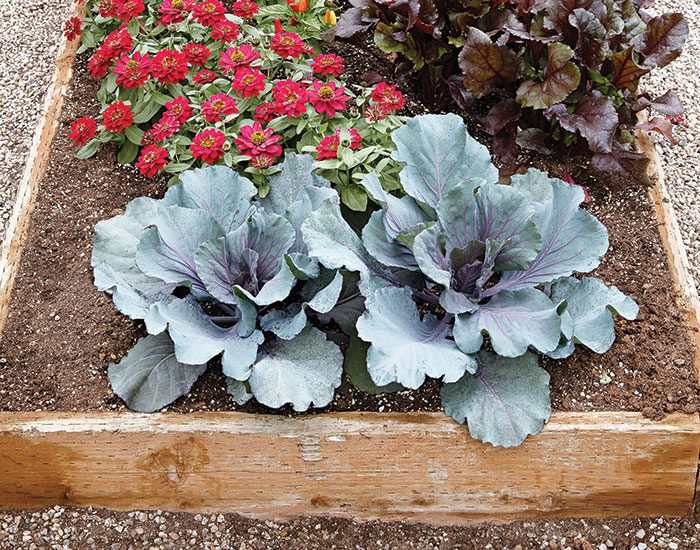
Wood
Cedar is a great and affordable choice for building a wooden raised bed. Untreated wood may last five years or so, depending on your climate. Pressure-treated wood has about twice the lifespan but some research suggests the chemicals may not be safe for vegetables. Line the inside of your wood raised bed with plastic if you’re concerned. Learn how to build your own simple wooden garden bed here.
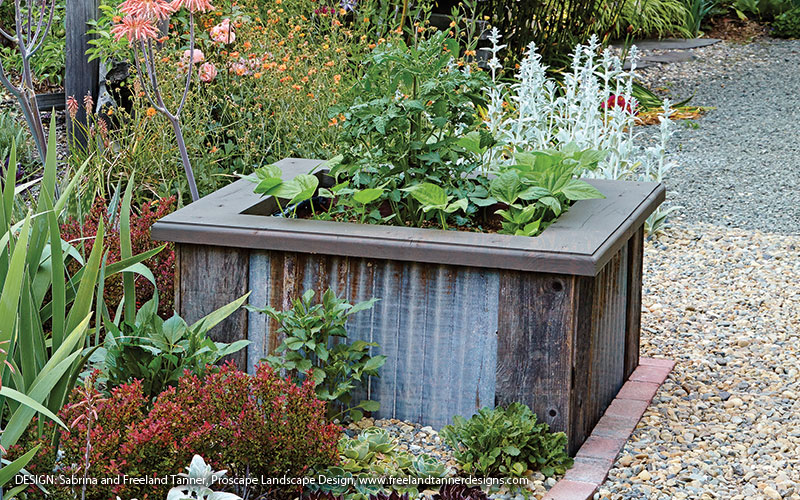
Corrugated metal
Metal is becoming trendy for its long life. Corrugated galvanized panels in a wood frame create a chic look that works well in urban environments. And corrugated stock tanks make easy ready-made raised beds.
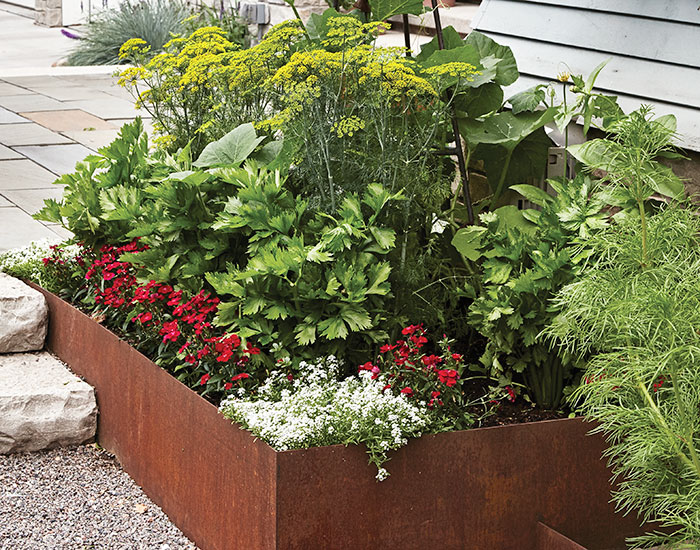
Weathered steel
Weathered steel has a rusted finish and a contemporary look. As the surface oxidizes, it creates a protective coating over the interior of the material so it has a relatively long life. This material's thin profile makes it a great option for raised beds in tight spaces, as its footprint is smaller than that of stone and most wood.
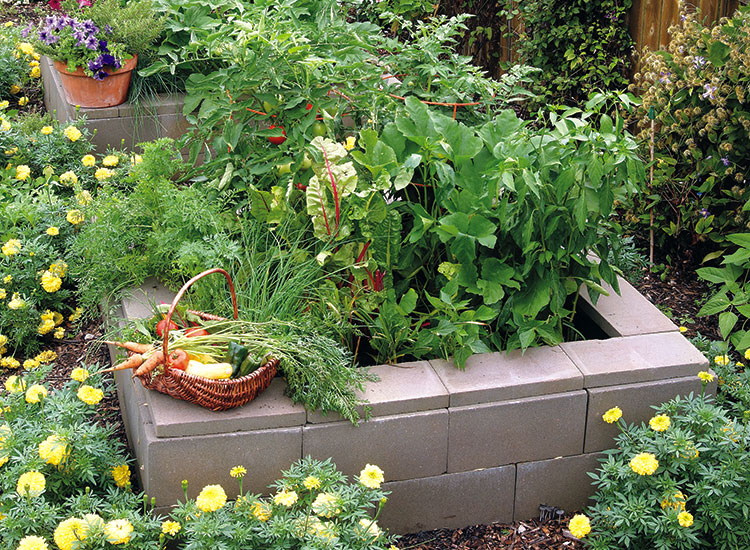
Concrete
Or go more traditional by stacking bricks or cinder blocks. To make a bed like this, level the soil in an area, then put down the first course of concrete blocks. Add a second course but be sure to stagger the seams with each course of blocks for stability.
Unique ideas for raised garden beds
Gardeners have developed many useful ways to make raised beds work for them. Here are a few favorite tips readers have shared with us over the years.
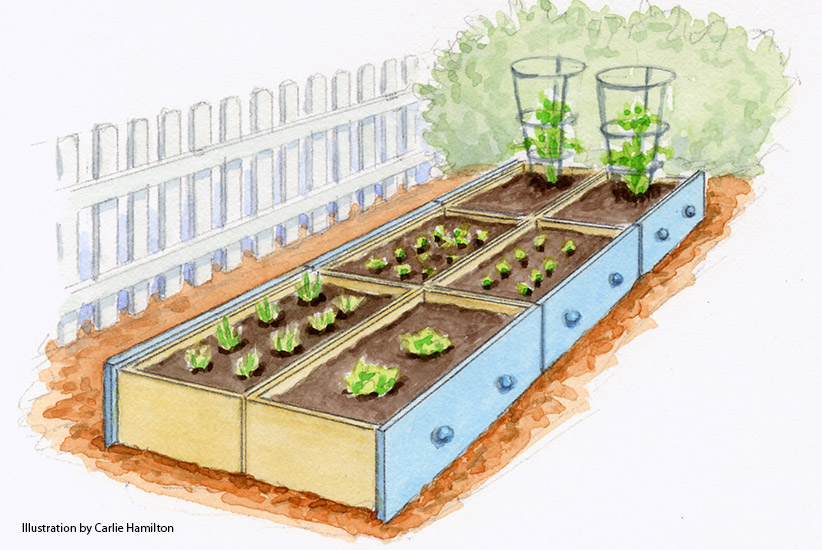
Upcycled garden beds
Kim Butterfoss of Massachussetts wanted raised beds but didn’t want to make a big investment in materials. After looking around, she got the idea to upcycle an old dresser! She removed the drawers from the body of the dresser and pried off the bottoms. Then she had six small frames with which to build her raised bed. The illustration above shows how she placed the drawers with the pulls facing out so the backs are flush against each other. You could make the raised bed as large or small as you’d like. With everything in place, she filled the raised bed with soil and was ready to plant.
You Might Also Like:
Budget-Friendly Backyard
Easy Upcycled Planter Ideas
Clever Garden Tool Tips
Upcycled Design Ideas for Your Garden
Easy raised beds made from steel roof panels
Bill Anderson of Georgia cut pieces of steel roof panels, available at home improvement or hardware stores, to double as sides for raised beds. Bill liked the first one he built so well, he knew he’d want others. Starting with a 35-inch-tall, square wood frame, he lines the inside with cut-open, nonrecyclable plastic dog food bags, attaching these to the wood with shingle nails. This lining works to keep water in, as well as extend the life of the 2×4s.
In addition to being wheelchair-accessible, this height is a perfect match for the 36-inch-wide panels — Bill sinks an inch of the steel into the ground for a neat look. And since the panel’s edges are sharp, it’s easy to push into the soil without having to dig a trench first. He nails four 2×4s onto the top of the frame, to cover the panels’ other sharp edges. Bill uses drywall screws to secure the steel-panel sides to the wooden frame. The beds are sturdy and stable, and leaving wide pathways between them allows a lawn mower or wheelchair to be pushed through without any problems.
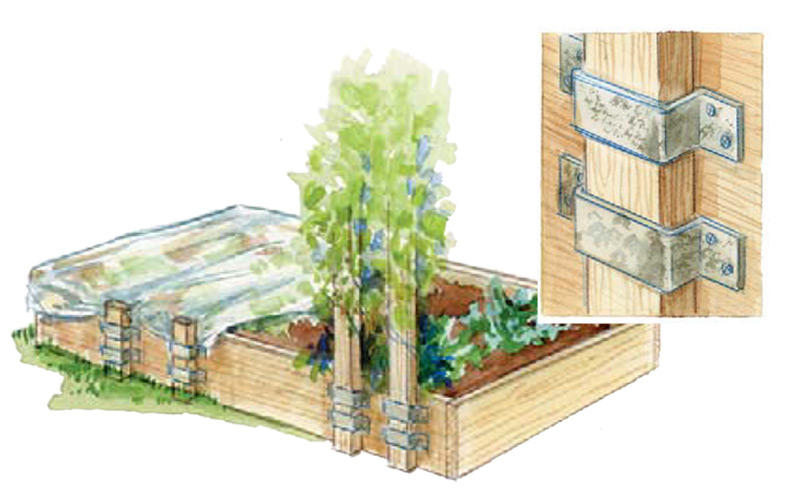
Raised garden bed brackets
Craig Videan from Michigan grows his vegetables in 4-by-8-foot raised beds. Every year he rotates crops, trying to avoid soil-borne diseases. That was easy with row crops, but moving those trellises for vine crops took a lot of extra work. They needed to be taken down, moved and then re-attached to the garden frame. After building a utility trailer from a kit, he had an idea. Why not use 2x4s to build the trellises and secure them with the same type of brackets that hold the 2x4 stakes for the sides of the trailer?
Craig attached the brackets at measured intervals along the sides of his garden frames. Then he inserted the trellis where he wanted it that season. The brackets above are available in the deck and fencing department at home improvement centers. Or he says you can make them from galvanized sheet metal.
Craig discovered an added benefit of the brackets. He needed to protect some seedlings with a floating row cover. After spreading the protective fabric over the raised bed, he tucked the edges into the brackets. Then he wedged a 2x4 scrap into each bracket, pinning the fabric. Craig says this holds the material securely and is easy to do after he hears a frost prediction.







